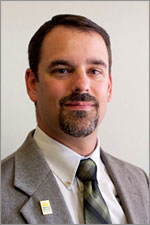
President Barack Obama’s proposal for tuition-free community colleges has brought new focus on community colleges. A uniquely American institution, the two-year college has been around for more than a century in several forms: “normal schools” for training teachers, junior colleges to launch students into four-year colleges and vocational schools providing training for skilled jobs.
Economics dictate that for most people, community colleges are going to play an increasing role in education. The average tuition at a public community college is only $2,792, reports the federal government’s National Center for Education Statistics. But money isn’t the only reason why community colleges are growing in importance, says Mission College President Daniel Peck. They go far beyond simply offering a cheaper route to a bachelor’s degree. “We’re in a dynamic period, with growing programs,” he says.
One of Mission’s important roles is mediating between high school and college, and college and work. “We can be a transition for high school students who are ready to do college work and focus on their interests,” says Peck. At the same time, programs like Mission College Center for Innovation in Technology (MC2IT) provide a transition path to work.
“Often students have interests, but they don’t know how to translate that into a career,” he says. Helping them do that “is a big part of what we do.”
MC2IT offers students opportunities for internships; counselors from tech industry experts; business education from Mission’s corporate partners and innovators; a Speaker series that lets students hear from tech giants like Bill Inmon, the “father” of data warehousing; and – because, after all this is Silicon Valley – entrepreneurial workshops and labs for testing new ideas.
Further, Mission can be more agile in responding to unique and dynamic needs for its some 12,000 students. “We can quickly develop programs in subjects that are ‘hot,'” he explains, for example, cyber-security and privacy. “It takes two years to develop a class for the state system. We can create a class right now.”
Mission College also provides support for students such as its peer-to-peer mentorship program where advanced students provide one-on-one help for new students in navigating college work – for example, skills many take for granted like how to take good notes.
Community colleges also are adaptable to the real lives of students; many of whom are juggling jobs, family and school. Peck knows how even the most dedicated students’ education can be derailed. His PhD dissertation never got written because of a family emergency that forced him to move. “I just stopped,” he says. “It keeps me mindful of what our students face.”
Peck wants to make sure that whatever happens in their lives, Mission’s students don’t “just stop” because they can’t see a way forward. “It’s our job as educators to create pathways for our students.”
One of the programs Peck is working on is “stackable” degree pathways that anticipate people transitioning between work and continuing education, and are smoothly synchronized from step to step. One example is a path to becoming a registered nurse (RN), that lets students first become Licensed Vocational Nurses (LVNs).
Further, in California it will soon be significantly simpler to transfer between community colleges and the California State University system.
“In the past, every community college had to create its own agreement with each state college for transferring credits,” he explains. Under the new agreement, if community colleges set up classes in a standard way, schools in the State University system will automatically accept the credits. A similar program with the University of California system is being investigated as well.
It all comes down to one word, says Peck. “The ‘community’ in our name. The vast majority of our students are from Silicon Valley. For industry, that means that the more people we train here, the fewer have to be recruited to come here.
“Our sole focus is serving students,” he continues. “We’re only here because of students. Faculty are here only because they want to teach. We can focus on a strong classroom environment.”
And some big changes in that environment are in the works, thanks to bond measures that have been passed in the last few years, starting with a new main campus building to replace the current 70s-era building. “All the classrooms will be smart classrooms, built with technology in mind,” says Peck.
The new construction will also fulfill a wish that many at Mission have had a long time, adds Peck. It will have a 150-seat theater, finally giving the college’s growing music and dance programs a real performance home of their own.
Classes for the 2015 spring semester began on Jan. 26, but students can still register. Visit www.missioncollege.org.
